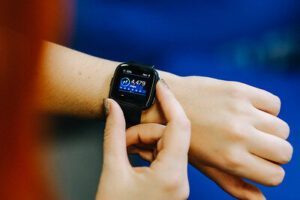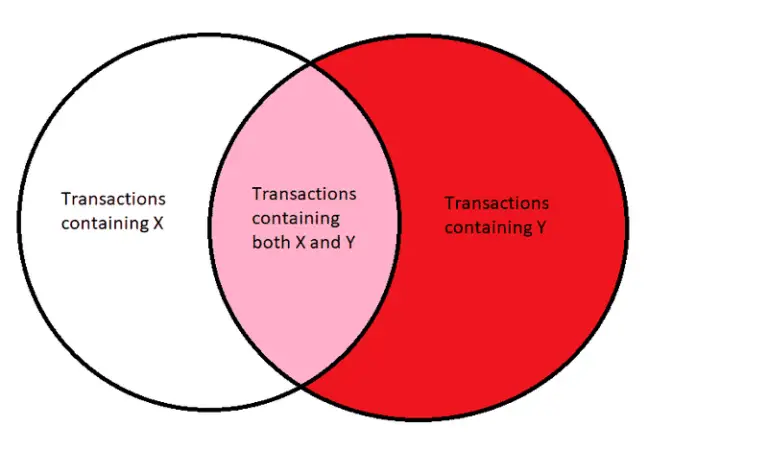5 Internet of Things Devices and Benefits Explained
Internet of things (IoT) devices include; wireless sensor, actuator, smart phone, automated fire alarm, and fitness tracker.
This article discusses internet of things devices, their basic features, and their benefits, as follows;
1). Wireless Sensor (as an Example of the Internet of Things Devices)
Wireless sensor in IoT, also referred to as IoT sensor, is a smart device that is designed with the capability to collect data from its surroundings in real-time.
In internet of things applications, multiple wireless sensors are often used. These are collectively referred to as 'wireless sensor networks' (WSNs), and include sensors that are spatially dispersed across a given area, and interconnected to enable them share data effectively.
An example of IoT sensor usage can be cited in smart irrigation systems, where sensor technology is used to collect data on soil moisture, that helps optimize the irrigation process while achieving water conservation [1].
IoT sensors are also used in healthcare, sometimes in the form of wearable devices that can collect data on pulse rate, among others [5].
The role of wireless sensor network (WSN) in IoT is a central one, because all functions of IoT systems depend directly on data that is collected by sensors. What this implies is that the working condition, capability and efficiency of sensors determine the overall performance of IoT systems.
It is important to note that sensor technology is highly variable and diverse, as it is usually tailored to suit specific conditions of use.

2). Actuator
An actuator in IoT is a device that uses data-based signals to execute motion functions..
The difference between IoT sensors and IoT actuators is in their role; where the sensors collect data and the actuators utilize the data to execute motion-based functions.
Actuators require energy or electricity for their function. Some types of actuators in IoT are; electric, hydraulic and pneumatic actuators, which are distinguished by their energy conversion and pattern of motion.
An example of electric actuator is the electric motor, which can produce rotary motion by converting electricity to mechanical energy, based on signals from sensors.
3). Smart Phone (as an Example of the Internet of Things Devices)
Smartphone is an internet of things device that has advantages like portability, simplicity, easy connectivity, and versatile application.
The smartphone is arguably the most versatile and usable IoT device, because of its high interactivity, big data, cloud and control capabilities [3].
Smartphones can connect to many other smart devices using wireless technology, and can perform diverse functions with the aid of software.
4). Automated Fire Alarm
Automated fire alarm is part of an IoT fire detection system, which comprises of sensors and analog-digital converters that can detect environmental temperature and air quality in order to notify humans of the presence of fire or smoke.
IoT is used in fire detection and prevention by collecting and processing data from the environment, then relaying it to an actuator that sets off a buzzer or siren, if the data is indicative of a fire hazard.
In some cases, the fire alarm may be part of a large system that connects fire services to residential areas, so that signals can direct a fire station to the precise location where a fore incident has occurred.
5). Fitness Tracker (as an Example of the Internet of Things Devices)
Fitness tracker is an IoT wearable device which is used to monitor users' health by collecting biometric data on pulse rate, locomotion and calorie consumption patterns, among others [2].
Generally, IoT is used in fitness by integrating sensors with data conversion systems to effectively manage data that provides insight on health-related parameters.
IoT fitness trackers can help reduce health risks through continuous monitoring of bodily functions and conditions [4].

Types of IoT Devices
Types of IoT devices are;
1). Wearables
2). Smart mobile devices
3). Disaster control devices
Benefits of IoT Devices
Benefits of IoT devices are;
1). Low labor demand
2). Improved productivity
3). Resource and energy efficiency
4). Real-time optimization and decision-making
5). Effect monitoring
Conclusion
Examples of internet of things devices are;
1. Wireless Sensor
2. Actuator
3. Smart Phone
4. Automated Fire Alarm
5. Fitness Tracker
Types of IoT devices are; wearables, smart mobile devices, and disaster control devices.
Benefits of IoT devices are; low labor demand, improved productivity, resource and energy efficiency, real-time optimization/decision-making, and effect monitoring.
References
1). Ismail, N.; Rajendran, S.; Tak, W. C.; Xin, T. K.; Anuar, N. S. S.; Zakaria, F. A.; Al Quhaif, , Y M.; Karakhan, H. A.; Rahim, H. A. (2019). "Smart Irrigation System based on Internet of Things (IoT)." Journal of Physics Conference Series 1339(1):012012. Available at: https://doi.org/10.1088/1742-6596/1339/1/012012. (Accessed 18 January 2023).
2). Kang, S.; Kim, Soram, K.; Kim, J. (2020). "Forensic analysis for IoT fitness trackers and its application." Peer-to-Peer Networking and Applications 13(2). Available at: https://doi.org/10.1007/s12083-018-0708-3. (Accessed 17 January 2023).
3). Khaddar, M. A. E.; Boulmalf, M. (2017). "Smartphone: The Ultimate IoT and IoE Device." In (Ed.), Smartphones from an Applied Research Perspective. IntechOpen. Available at: https://doi.org/10.5772/intechopen.69734. (Accessed 17 January 2023).
4). Qiu, Y.; Zhu, X.; Lu, J. (2021). "Fitness Monitoring System Based on Internet of Things and Big Data Analysis." IEEE Access PP(99):1-1. Available at: https://doi.org/10.1109/ACCESS.2021.3049522. (Accessed 17 January 2023).
5). Raijah, P.; Ganesh, A. B. (2019). "Internet of Things (IoT) Enabled Wireless Sensor Network for Physiological Data Acquisition: Proceedings of ICICA 2018." Advances in Intelligent Systems and Computing. Available at: https://doi.org/10.1007/978-981-13-2182-5_17. (Accessed 17 January 2023).
